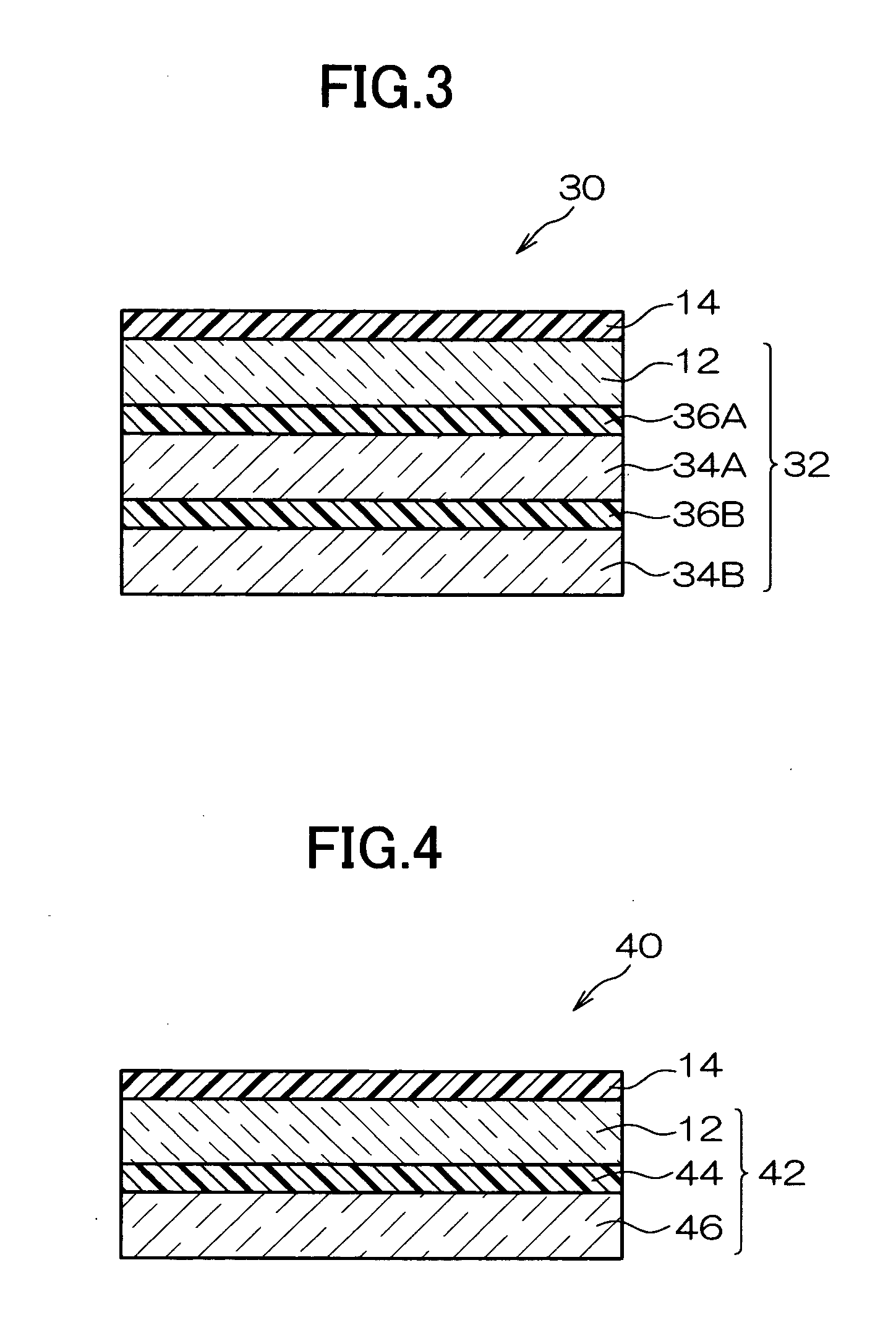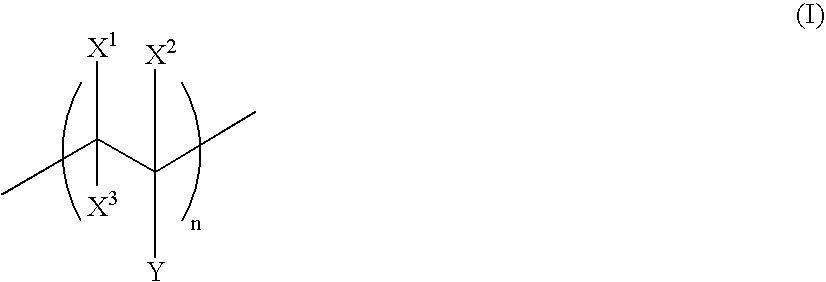Surface antifogging, antisoiling, tempered glass and method for producing the same
a technology of tempered glass and anti-fogging, which is applied in the direction of transportation and packaging, coatings, chemical instruments and processes, etc., can solve the problems of low scratch resistance, poor filming properties and brittleness of titanium oxide particle films, and the inability of chemical surface treatments to meet the requirements of anti-fogging, anti-soiling properties of glass surfaces, etc., to achieve high anti-fogging and anti-soiling properties, anti-soil
- Summary
- Abstract
- Description
- Claims
- Application Information
AI Technical Summary
Benefits of technology
Problems solved by technology
Method used
Image
Examples
examples
[0167] The present invention will be described in detail below with reference to Examples without intention of restricting the scope of the invention.
synthesis example
Synthesis of Specific Polymer (1)
[0168] 50 g of acrylamide, 3.4 g of mercaptopropyltrimethoxysilane, and 220 g of dimethylacetamide were added to a 500-ml, 3-necked flask, and 0.5 g of 2,2-azobis(2,4-dimethylvaleronitrile) was added thereto at 65° C. under nitrogen flow. The mixture was maintained at the constant temperature for 6 hours while stirring, and then cooled to the room temperature. The mixture was added to 2 L of ethyl acetate, and the precipitated solid was isolated by filtration and water-washed to obtain a specific polymer (1). The dry weight of the product was 52.4 g. As a result of a GPC measurement (polystyrene standard), the polymer had a weight average molecular weight of 3,000. Further, it was confirmed by a 13C-NMR (DMSO-d6) analysis that the polymer was Example Compound II-1, in which a trimethoxysilyl group (50.0 ppm) was introduced to the end.
synthesis example 2
[0169] A specific polymer (2) was produced in the same manner as Synthesis Example 1 except for using the following compound (4.4 g) instead of mercaptopropyltrimethoxysilane (3.4 g). The dry weight of the product was 13.0 g. As a result of a GPC measurement (polystyrene standard), the polymer had a weight average molecular weight of 3,000. Further, it was confirmed by a 13C-NMR (DMSO-d6) analysis that the polymer was Example Compound II-2, in which a trimethoxysilyl group (50.0 ppm) was introduced to the end.
(CH3O)3Si—CH2CH2NHCOCH2CH2SH
PUM
| Property | Measurement | Unit |
|---|---|---|
| temperature | aaaaa | aaaaa |
| melting temperature | aaaaa | aaaaa |
| melting temperature | aaaaa | aaaaa |
Abstract
Description
Claims
Application Information
 Login to View More
Login to View More - R&D
- Intellectual Property
- Life Sciences
- Materials
- Tech Scout
- Unparalleled Data Quality
- Higher Quality Content
- 60% Fewer Hallucinations
Browse by: Latest US Patents, China's latest patents, Technical Efficacy Thesaurus, Application Domain, Technology Topic, Popular Technical Reports.
© 2025 PatSnap. All rights reserved.Legal|Privacy policy|Modern Slavery Act Transparency Statement|Sitemap|About US| Contact US: help@patsnap.com



